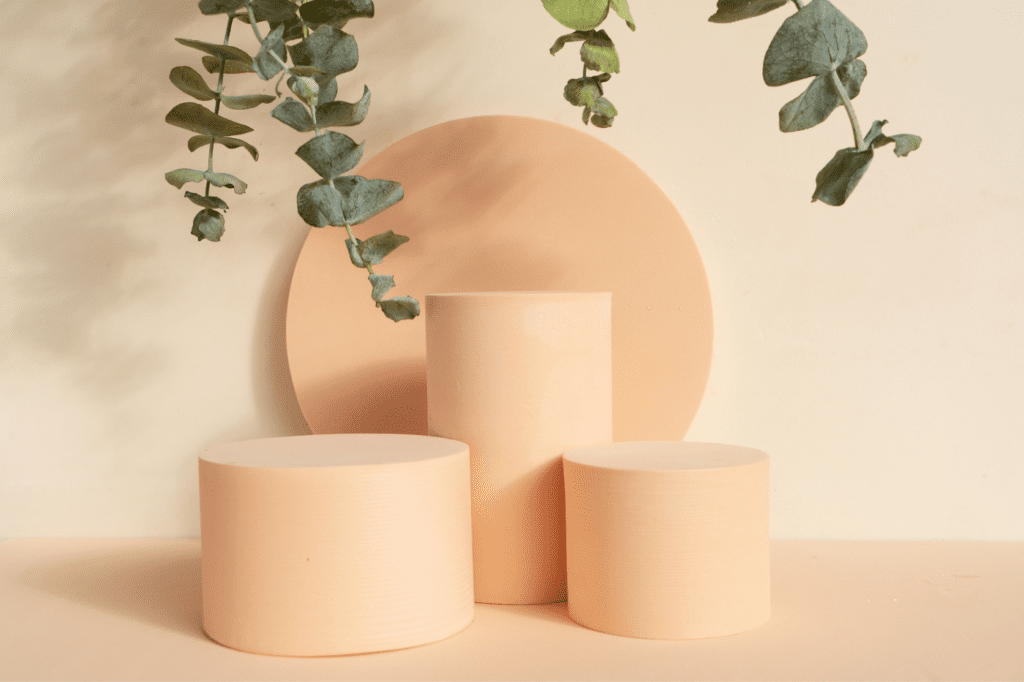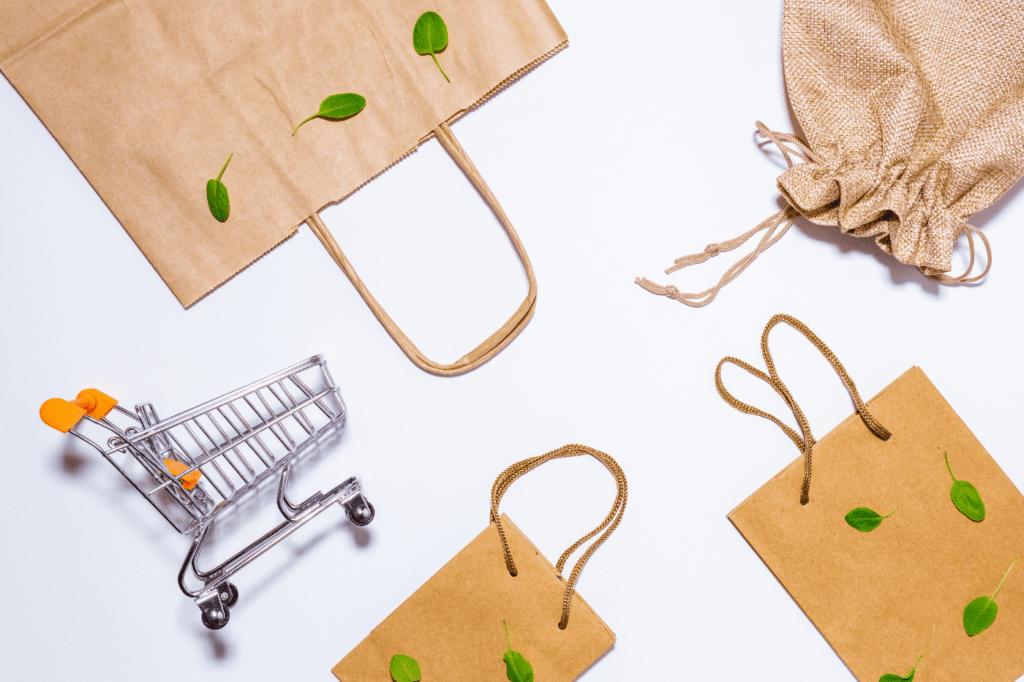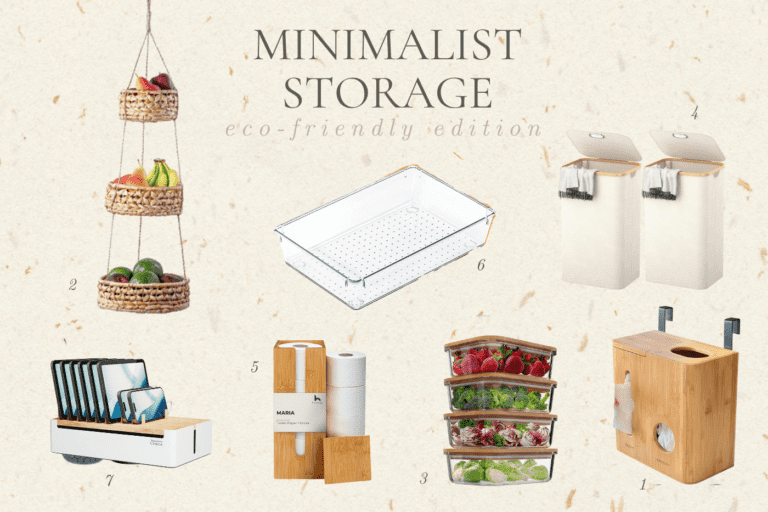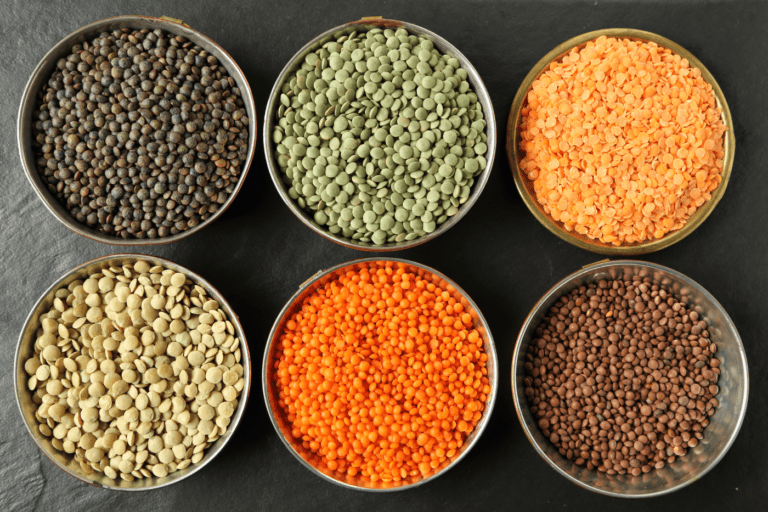Are you yearning for simplicity and sustainability but feeling overwhelmed? Navigating eco-minimalism and becoming an eco-minimalist don’t have to be complex.
This guide addresses common concerns and provides a clear path to a more intentional, eco-friendly lifestyle. Dive in, discover practical steps, and turn aspirations into actions.
What is eco-minimalism?

Ever heard of eco-minimalism? It’s a lifestyle that blends the simplicity of minimalism with a strong commitment to the environment.
Here’s what it’s all about:
Key Principles
- Simplicity: Simplify your life by decluttering and owning only what you truly need.
- Sustainability: Make eco-conscious choices in every aspect, from products to daily habits.
- Mindful Consumption: Be intentional about what you buy, favoring quality over quantity.
Practical Steps
- Declutter Responsibly: Clear out the excess, and responsibly dispose of or donate items.
- Choose Sustainable Products: Opt for items with minimal environmental impact and ethical production.
- Reduce Single-Use Items: Minimize waste by cutting down on single-use plastics and disposable products.
- Mindful Spending: Prioritize purchases that align with your values and have a lasting impact.
Benefits
- Environmental Impact: Less waste and eco-friendly choices contribute to a healthier planet.
- Simplified Life: Reduced physical and mental clutter for a more serene lifestyle.
Ready to simplify your life while being kind to the planet? Explore eco-minimalism in depth with us in the following few scrolls.
What is the difference between minimalism and eco-minimalism?

While minimalism and eco-minimalism share a love for simplicity, they have distinctive focuses.
Here’s a breakdown:
Minimalism
- Focus: Simplifying life by decluttering and prioritizing what brings joy or value.
- Approach: Emphasizes owning fewer possessions and embracing a minimalist aesthetic.
- Benefits: Clarity, reduced stress, and a more intentional, curated lifestyle.
Explore a deeper understanding of minimalism at What is Minimalism? Easy-to-Understand Explanation.
Eco-Minimalism
- Focus: Merges minimalism with a commitment to environmental sustainability.
- Approach: Extends beyond possessions to include eco-conscious choices in daily life.
- Benefits: Reduced environmental impact, ethical consumption, and a simplified, eco-friendly lifestyle.
Key Differences
- While minimalism centers on decluttering for a simpler life, eco-minimalism, prioritizing sustainable and ethical choices, adds an environmental layer.
- Minimalism is often more aesthetically driven, focusing on the beauty of simplicity, while eco-minimalism integrates ethical considerations into the simplicity mindset.
In a Nutshell
Minimalism shapes your personal space and mindset, while eco-minimalism extends that impact to the planet, making your lifestyle choices environmentally responsible.
Whether you’re drawn to minimalism’s serene simplicity or eco-minimalism’s eco-friendly twist, both paths lead to intentional living. Choose the one that resonates with your values and aspirations.
How do I become an eco-minimalist?

Becoming an eco-minimalist involves intentional choices and mindful actions.
Here’s your step-by-step guide:
1. Reflect on Values
- Why Go Eco-Minimalist? Understand your motivations. Is it for a simpler life, a reduced environmental footprint, or both? Clearly define your values.
- Example: If you care for a reduced environmental footprint, assess your own carbon footprint. Calculate it using online tools to understand your impact.
2. Assess Your Current Lifestyle
- Audit Your Possessions: Evaluate what you own. Identify items you no longer need and consider their environmental impact.
- Example: Evaluate your kitchen. Identify unused gadgets or utensils and donate them. Opt for a reusable water bottle instead of disposable ones.
3. Declutter Responsibly
- Donate or Sell: Rather than discarding, find new homes for items. Platforms like thrift stores, online marketplaces, or donation centers can give your belongings a second life.
- Example: Before discarding clothes, host a clothing swap with friends or donate to a local charity. Ensure items find new homes.
Learn more about effective decluttering techniques and embracing minimalism responsibly at How to Declutter and Live Minimalism.
4. Opt for Quality over Quantity
- Mindful Purchasing: Choose durable, high-quality items that align with eco-friendly values. Prioritize functionality and longevity.
- Example: When replacing a worn-out item, invest in a high-quality, durable alternative. For instance, choose a stainless steel razor instead of disposable plastic ones.
5. Reduce Single-Use Items
- Swap Disposables: Replace single-use products with reusable alternatives—water bottles, bags, containers, and more.
- Example: Swap single-use coffee cups for reusable ones. Carry a reusable shopping bag and cut down on disposable packaging.
6. Choose Sustainable Products
- Eco-Friendly Brands: Research and support brands committed to sustainability. Look for certifications like Fair Trade, organic, or recycled materials.
7. Streamline Your Wardrobe
- Capsule Wardrobe: Build a versatile wardrobe with timeless, essential pieces. Donate or repurpose clothing you no longer need.
For a curated list of eco-friendly capsule wardrobe brands that embody quality and sustainability, check out The Best Eco-Friendly Capsule Wardrobe Brands.
8. Minimize Energy Consumption
- Energy-Efficient Practices: Conserve energy by using energy-efficient appliances, turning off lights, and being mindful of water usage.
For in-depth tips on energy efficiency, explore ways to save energy on EnergySage. 🌿💡(Note: This link will take you to EnergySage.com.)
9. Embrace DIY and Upcycling
- Get Creative: Explore do-it-yourself projects and upcycling. Repurpose old items into something new, reducing waste.
- Example: Turn old jars into storage containers. Create DIY cleaning products with natural ingredients to reduce reliance on packaged cleaners.
10. Mindful Consumption Habits
- Conscious Choices: Think before you buy. Ask yourself if the item aligns with your values and if it’s truly necessary.
- Example: Before buying new electronics, consider if repairs are possible. Evaluate the necessity of each purchase to avoid impulse buying.
11. Educate Yourself Continuously
- Stay Informed: Keep up with eco-friendly practices and sustainable living. Continuous learning helps you make informed choices.
- Example: Attend local sustainability events or workshops.
12. Advocate for Change
- Inspire Others: Share your eco-minimalist journey with friends and family. Be an advocate for sustainable living, inspiring positive change.
- Example: Share your eco-minimalist journey on social media. Encourage friends to join in and participate in local environmental initiatives.
Remember, becoming an eco-minimalist is a gradual process. Small, consistent steps lead to significant change over time.
Embrace the journey, and let your choices reflect the values you hold. Ready to make a difference? Start your eco-minimalist adventure today!
How do I live an eco-minimalist lifestyle?

Getting started with an eco-minimalist lifestyle is a fulfilling journey. But as with all things, the initial start may be filled with doubts as to where you should start.
So, here’s your guide with practical ideas and product recommendations to make your dive in to the eco-minimalist world a breeze:
10 Eco-Minimalist Everyday Ideas
- Mindful Consumption: Prioritize experiences over possessions. Choose quality, eco-friendly products consciously.
- Reusable Alternatives: Embrace reusable items like water bottles, bags, and containers to minimize waste.
- Zero-Waste Cooking: Optimize ingredients, reduce food waste, and explore sustainable cooking practices.
- DIY Cleaning Products: Create your own cleaners using natural ingredients to eliminate the need for multiple packaged products.
- Composting: Turn kitchen scraps into nutrient-rich compost for your plants.
- Minimalist Decor: Curate a minimalist and sustainable home decor style, favoring timeless pieces.
- Eco-Friendly Commuting: Choose sustainable transportation options like biking, walking, or public transit.
- Digital Reading: Embrace e-books and audiobooks to minimize paper usage.
- Upcycling Projects: Give old items new life through creative upcycling projects.
- Local and Seasonal Eating: Opt for locally sourced, seasonal produce to reduce your carbon footprint.
10 Eco-Minimalist Products to Buy
- Reusable Water Bottles: Invest in durable, BPA-free bottles for hydration on the go.
- Eco-Friendly Clothing: Choose sustainable fabrics and ethical brands for a minimalist wardrobe.
- Beeswax Wraps: Replace plastic wraps with reusable and biodegradable beeswax wraps.
- Reusable Coffee Cups: Bring your own cup to coffee shops to reduce single-use cup waste.
- Stainless Steel Razor: Invest in a durable, reusable razor instead of disposable plastic ones.
- Biodegradable Toothbrush: Opt for toothbrushes with compostable handles.
- Solar-Powered Chargers: Charge your devices with solar-powered chargers for a sustainable energy source.
- Bamboo Cutlery Set: Carry a reusable bamboo cutlery set to avoid single-use plastic utensils.
- Refillable Cleaning Products: Choose cleaning products with refillable options to reduce packaging waste.
- Reusable Produce Bags: Use washable, reusable produce bags instead of single-use plastic bags.
10 Products Not to Buy as an Eco-Minimalist
- Single-Use Plastics: Eliminate items like disposable cutlery, straws, and cups.
- Fast Fashion Apparel: Avoid fast fashion and opt for timeless, high-quality clothing.
- Disposable Cleaning Wipes: Choose reusable alternatives like washable cloths for household cleaning.
- Plastic Water Bottles: Say no to single-use plastic water bottles and opt for reusable options.
- Paper Towel Rolls: Substitute with reusable cloth towels or napkins to reduce paper waste.
- Excessive Packaging Products: Avoid items with unnecessary packaging to minimize overall waste.
- Single-Use Batteries: Opt for rechargeable batteries to reduce environmental impact.
- Disposable Razors: Choose a durable, long-lasting razor instead of disposable ones.
- Plastic Bags: Say goodbye to single-use plastic bags and use reusable alternatives.
- Non-Recyclable or Non-Compostable Items: Be mindful of items that don’t have eco-friendly disposal options.
Conclusion: A Greener, Simpler Tomorrow
As you wrap up this guide to eco-minimalism, remember that every small change contributes to a more sustainable and intentional life.
By embracing simplicity and making eco-conscious choices, you’ve taken significant steps toward reducing your environmental impact. Your journey doesn’t end here; it evolves with each mindful decision.
Let these eco-minimalist principles guide you to a future where conscious living and a healthier planet go hand in hand. As you continue your exploration, inspire others to join the movement.
The collective impact of individual choices creates a ripple effect, fostering a world where less truly becomes more!








